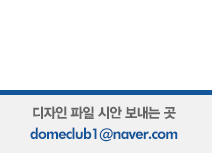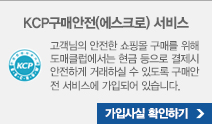Why You Should Concentrate On The Improvement Of Prescription Drugs Co…
페이지 정보
작성자 Leila 작성일23-05-06 21:41 조회96회 댓글0건본문
| Why You Should Concentrate On The Improvement Of Prescription Drugs Compensation | |||
| - - | |||
|
( - ) |
|||
| 하루종일 시 ~ 시 | |||
중복선택가능 |
|
||
|
|||
|
What is a Prescription Drugs Claim? A prescription drugs compensation drug claim is a kind of form that you need to fill out to request a reimbursement for drugs. The form is available on the website of your insurance company. FDA drug claims are controlled by the Food and Drug Administration (FDA). In some cases, a company may not be able sell an over-the-counter (OTC) product until it has been approved by the FDA for the specific drug claim. Over-the-Counter (OTC) Monographs Monographs are the primary means through which the FDA evaluates the safety of OTC medicines. This system is an essential step in ensuring OTC medicines are safe and effective for American families, but it's also an outdated and inefficient procedure. The monograph system takes years to develop and does not allow for changes to be made quickly when new science or safety concerns emerge. Congress recognized that the OTC monograph system is not suited to the current needs and required a modern and responsive transparent regulatory structure. The CARES Act was passed by Congress. It provides a structure for FDA's periodic updating of OTC monographs for drugs without the notice-and-comment rulemaking procedure. It also permits FDA to review OTC products to meet the changing needs of consumers. The CARES Act gives FDA authority to issue administrative orders (OMORs) which add or subtract GRAS/E-related conditions for OTC drugs. These orders can be initiated either by FDA or the industry. Once an OMOR has been sent to the FDA the FDA, it will go through public comment before being evaluated by the FDA. The FDA will then take an official decision on the OMOR. This is a significant change to the OTC system, and is an important way to safeguard patients from harmful medicines that have not been approved through the NDA process. The new law will also make sure that OTC products are not over-marketed and will reduce discomfort for patients. OTC monographs must include the active ingredient(s) or botanical drug substance(s) in addition to as information about the OTC product as well as directions for usage. The OTC monograph also has to include the registration for the drug establishment information for the manufacturer that is updated every year. Additionally, the CARES Act imposes a facility fee on each manufacturer that holds an OTC monograph registration for a drug establishment for that fiscal year. The fees will commence in Fiscal Year 2021 and will be determined by the number of OTC monograph drugs a company sells to the public. Additionally there are other reforms that are included in the CARES Act includes several other reforms that will improve the OTC drug monograph system. This includes allowing closed meetings with FDA for OTC monograph products, and an exclusivity timeframe for certain OTC monograph drugs. These measures are intended to ensure that the FDA is always in touch with the most current information on safety and efficacy. FDA Approval CDER, the FDA's Center for Drug Evaluation and Research (FDA) examines new drugs before they are allowed to be sold. It ensures that the drugs are safe and their benefits outweigh the risk. This allows doctors and patients to make informed decisions about how to use these medicines. There are several ways that a drug or medical device can be approved by the FDA. FDA approval. The procedure is based on scientific proof. Before a drug or device can be approved by the FDA, the FDA scrutinizes all information. The majority of drugs are subject to the NDA (New Drug Application) process, which involves testing in animals and humans to determine the safety and effectiveness of the drug is. The FDA also inspects the production facilities where drugs are produced. Biologics, like vaccinesand allergenics as well as cell and tissue-based products, and gene therapy drugs have a different route than other types. These biological products must be submitted to an application called a Biologics License Approval Application (similar to the NDA). The FDA conducts tests on animals, labs, and human clinical tests prior to approving biologics. Patent law safeguards brand-name drugs in the United States. This includes those manufactured by major pharmaceutical companies. If a generic drug maker produces a drug that violates the patent, the brand-name company may sue the manufacturer. The lawsuit could stop the generic drug from being sold for as long as 30 months. Generic medications can also be created in the event that they contain the same active ingredient as the brand name medication. The generic drug is known as an abbreviated drug application (ANDA). There are other ways devices or drugs can be swiftly approved if it is significant advantages over other devices and drugs. These include Fast Track Therapy and Breakthrough Therapy designations. The FDA's accelerated approval permits it to swiftly review drugs that treat serious diseases and address unmet medical needs. To accelerate the review process of these drugs, the FDA can utilize surrogate endpoints like blood tests to speed the process instead of waiting for the results of clinical trials. The FDA also has a program that allows for manufacturers of drugs to submit a portion of their applications as soon as they are available instead of waiting for the entire application to be submitted. This is known as rolling submission and reduces the time required for the agency to approve a drug. It can also reduce the number of drug tests required to be approved, which could help to save money. FDA Investigational New Drug Application (INDs). A sponsor prescription drugs claim who wishes to conduct a research study of a drug that is not approved must submit an IND application. These INDs are typically used for clinical trials of biologics and pharmaceuticals that are not yet accepted for use as prescription drugs claim medications but have the potential to become prescription drugs. An IND must contain information about the clinical investigation and the anticipated duration. It also needs to indicate the method by which the drug will be administered. It must also provide enough information to ensure the safety and effectiveness of the drug, as well as the proper identification, quality, purity and strength of the drug. The information you provide will depend on the stage of the investigation as well as the length of the investigation. The IND must also contain information on the composition, manufacturing, and control methods used to prepare the drug substance or drug product for the investigational purpose for the reason for which the application was submitted. In addition, the IND must contain the information on pyrogenicity and sterility testing for parenteral drugs as as details on the procedure of shipping the drug to the recipient. (b) The IND must contain a section that describes the manufacturing history and the experiences of the drug being investigated. This includes any testing on human subjects conducted outside the United States, any research performed using the drug in animals and any published information that could be relevant to the safety of the research or the rationale for its proposed use. The IND must also include any other information FDA may require to review for technical or safety information. FDA must have access to these documents. In the course of an IND investigation The sponsor must report any unexpected fatal or life-threatening suspected adverse reactions as quickly as they can, but not more than 7 calendar days after the date of receipt of the information. They must also provide any reports of foreign suspected adverse reactions. These reports must be filed in narrative format either on an FDA form 3500A or electronically, which can be reviewed, processed and archived. Marketing Claims A product may claim to be superior or more efficient than competitors in marketing. They can be based on an opinion or evidence. Regardless of the type of claim, it needs to be clear and consistent with the brand's personality. Promotion and advertising are controlled by the Federal Trade Commission (FTC), and the Food and Drug Administration. The rules and regulations are designed to stop misleading and false information from being sold. Marketers must have reliable and credible scientific evidence to back up any claim they make prior to making any claim. This requires extensive research, which includes clinical testing with humans. There are four types of advertising claims, and each one has its own rules that are applicable to it. These include product claim as well as reminder, help-seeking and promotional drug advertisements. A product claim ad must identify the drug, speak about the condition it treats, and offer both benefits and potential risks. It should also include the brand and generic names. A help-seeking advertisement doesn't recommend or suggest a specific medication, but it could identify a condition or disease. Although these kinds of ads are designed to increase sales, they need to be honest and not deceitful. False or misleading advertisements are unlawful. FDA examines the ads for prescription drugs to ensure they are truthful and give consumers information about their health. The ads must be balanced and include the benefits and risks in a manner that is fair to the customer. A company could be sued if it makes a misleading or false prescription drug claim. This could result in fines or a settlement. Companies should conduct market research to determine the audience they want to target. This will help them develop a convincing prescription drug claim that is well-supported. This research should include a study on demographics and an analysis of their needs and preferences. To get a better understanding of the needs and wants of the targeted audience the company must conduct surveys. |
댓글목록
등록된 댓글이 없습니다.





















